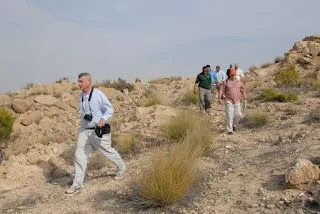Around 25 Percent of Africa is Desert
Roughly 25% of Africa is covered by deserts, primarily the Sahara Desert in the north and the Kalahari Desert in the south.
A desert is a region characterized by insufficient moisture to support most plant and animal life types. Deserts typically receive very little precipitation, and the limited water availability is a defining feature. They can be hot deserts, like the Sahara, or cold deserts, like parts of the Gobi Desert in Asia.
Exploring Africa's Desert Wilderness
Sahara Desert
The Sahara Desert covers approximately 30% of the African continent. It is the largest hot desert in the world, stretching across several North African countries, including Algeria, Chad, Egypt, Libya, Mali, Mauritania, Niger, Sudan, and Tunisia.
Namib Desert
The Namib is famous for its towering orange sand dunes, some of which are among the tallest in the world. The Namib Desert is considered to be the oldest desert in the world.
Kalahari Desert
The Kalahari, despite its name, features diverse habitats, including grasslands and salt pans, and is home to various wildlife. The Kalahari Desert is estimated to cover roughly 70% to 80% of Botswana, a significant portion of western and central Namibia, and a smaller portion of northeastern South Africa.
Nubian Desert
The Nubian Desert extends across parts of Egypt and Sudan, featuring rocky plateaus and valleys along the Nile River.
Danakil Desert
The Danakil is known for its otherworldly landscapes, including bubbling lava lakes and colorful mineral deposits.
Libyan Desert
The Libyan Desert boasts some of the world's most extreme temperature variations, from scorching days to freezing nights.
Eastern Desert
Egypt's Eastern Desert is characterized by rugged mountains and is rich in mineral resources.
Sahel
Though not a classic desert, the Sahel is a semi-arid region on the southern edge of the Sahara, experiencing alternating dry and wet seasons.
Great Karoo
The Great Karoo in South Africa is a vast semi-desert area with unique flora and important fossil sites.
Atacama Desert
While primarily in South America, the northernmost part of the Atacama Desert extends into Africa, known for its extreme aridity.
Mourdi Depression
Located in Chad, the Mourdi Depression is one of the lowest points in Africa, characterized by salt flats and seasonal lakes.
Wahiba Sands
These orange sands in Oman and extending into eastern Yemen are often considered part of the African deserts, featuring stunning dunes.
Guban Desert
Found in Somalia and Ethiopia, the Guban Desert is known for its harsh terrain and unique flora.
Bayuda Desert
Situated in Sudan, the Bayuda Desert is part of the Nubian Desert and features rocky plains and ancient archaeological sites.
Nyiri Desert
Found in Kenya and Tanzania, the Nyiri Desert is a relatively small arid region with unique landscapes.
Deserts form due to the rain shadow effect, proximity to oceans, global wind patterns, tectonic activity, and climate change.
Rain Shadow Effect
Mountains can block moisture-laden air masses, causing them to release their moisture on the windward side of the mountains. As the air descends on the leeward side, it becomes dry, creating a desert-like environment. An example of this is the Atacama Desert in South America.
Proximity to Oceans
Cold ocean currents can inhibit evaporation and limit moisture in the air, leading to arid conditions along coastlines. The Namib Desert along the southwestern coast of Africa is an example.
Global Wind Patterns
The Earth's rotation and atmospheric circulation patterns influence moisture distribution. Areas near the subtropical high-pressure zones can become deserts.
Tectonic Activity
Plate tectonics can create arid conditions. For example, the Arabian Desert is partially formed due to the collision of the African and Eurasian plates.
Climate Change
Changes in global and regional climate patterns can contribute to desertification, the process by which fertile land becomes desert. Human activities, such as deforestation and unsustainable agricultural practices, can exacerbate this process.
African countries with deserts and % of land covered by deserts.
Algeria, The Sahara Desert, covers about 80% of the country's total land area.
Libya, The Sahara Desert, covers about 95% of the country's total land area.
Mauritania, The Sahara Desert, covers about 70% of the country's total land area.
Egypt, The Eastern Desert, and the Western Desert collectively cover around 20% of the country's total land area.
In Sudan, around 60% to 70% of Sudan is covered by desert or arid lands. The Sahara Desert extends across northern Sudan, encompassing a substantial portion of the country's territory.
Niger, The Sahara Desert, covers about 80% of the country's total land area.
Chad, The Sahara Desert, covers about 80% of the country's total land area.
In Morocco, approximately 80% of the area is considered desert or semi-arid land. The Sahara Desert covers a significant portion of southern Morocco, extending into other North African countries as well.
Tunisia, The Sahara Desert, covers about 40% of the country's total land area.
Mali, The Sahara Desert, covers about 40% of the country's total land area.
In Eritrea, about 48% is covered by desert and arid lands. Most of this desert area is part of the Danakil Desert, located in the country's southern and southeastern regions.
Namibia, The Namib Desert, and parts of the Kalahari Desert cover 48% of the country's total land area.
Botswana, The Kalahari Desert, covers about 70-80% of the country's total land area.
Angola, The Namib Desert, extends into the southern part of Angola. Approximately 79% of Angola's land area is arid or semi-arid, which includes desert-like or desertified regions. However, it's important to note that not all of this arid land is classified as a true desert. The country does have desert areas, particularly in the southern part, where the Namib Desert extends into Angola. Still, the exact percentage of deserts cover may vary based on definitions and classifications.
In South Africa, approximately 39% of South Africa is covered by desert and arid lands. The largest desert in South Africa is the Kalahari Desert, which spans several countries, including South Africa, Botswana, and Namibia. The Kalahari Desert covers a significant portion of the northwestern region of South Africa. It's important to note that not all of the desert and arid areas in South Africa are traditional sand dunes; they can also include semi-arid grasslands and scrublands.





